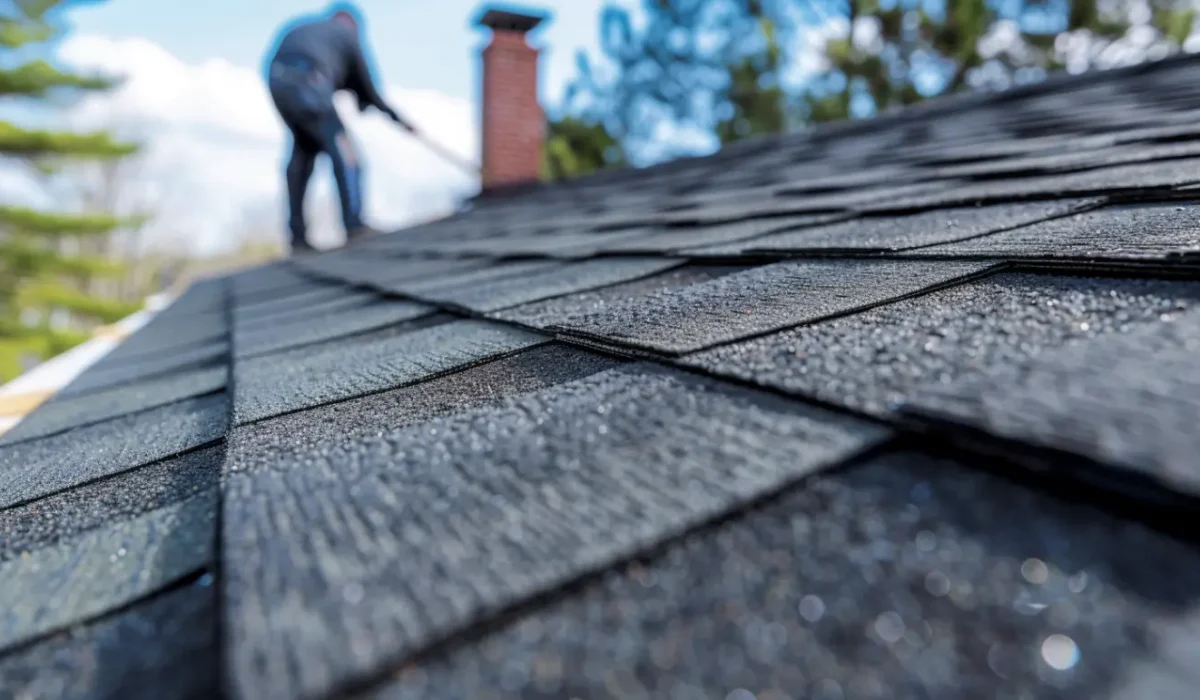As the chill of winter fades and the warmer months roll in, spring presents the perfect opportunity for homeowners to assess the condition of their roof. In Coppell, TX, where winter storms, wind, and fluctuating temperatures can quietly damage even the most durable roofs, a thorough spring inspection is essential. Performing routine maintenance now can prevent costly repairs later—and extend the life of your roof for years to come. Use this spring roof inspection checklist to make sure your home is ready for the season ahead.
1. Inspect Shingles for Damage
Start by examining your shingles for signs of curling, cracking, blistering, or loss of granules. Winter weather, including hail and freezing temperatures, can weaken shingles and reduce their protective capabilities.
If you notice loose or missing shingles, it’s important to schedule a professional inspection. Damaged shingles can allow water to seep beneath the surface, leading to interior leaks or mold growth. Replacing compromised shingles early prevents bigger problems down the road.
2. Check for Debris and Tree Branches
Spring storms in Texas often bring strong winds that can blow tree limbs and debris onto your roof. Over time, this debris can trap moisture, wear down roofing materials, and block proper drainage.
Clear branches, leaves, and other debris from your roof surface and surrounding gutters. Trimming overhanging branches also helps prevent future damage and reduces the risk of animals nesting on your roof.
3. Clean and Inspect Gutters and Downspouts
Gutters are a key part of your roofing system. They direct rainwater away from your foundation and prevent water from pooling on your roof. Clogged gutters, however, can cause water to back up, increasing the chance of leaks and structural issues.
Inspect and clean your gutters and downspouts, checking for loose fittings or cracks. Also ensure water is flowing freely and draining at least five feet away from your foundation.
4. Examine Flashing and Roof Penetrations
Flashing protects the areas where your roof meets chimneys, skylights, vents, and walls. These are common leak points and must be tightly sealed to prevent water intrusion.
Look for rust, cracks, or areas where the flashing is lifting. Resealing or replacing flashing is a quick fix that can prevent serious water damage. If you’re unsure what to look for, a roofing contractor can assess these areas as part of a routine inspection.
5. Look for Signs of Sagging or Structural Shifts
Walk to the edge of your property and inspect your roofline. Is it straight and even, or do you notice any dips or sags? A sagging roof may indicate compromised decking, rot, or other structural issues that need immediate attention.
These problems can worsen quickly and are especially dangerous if left unresolved. If you see sagging areas, don’t delay—call in a professional for a full evaluation.
6. Assess the Condition of Roof Vents
Roof ventilation is crucial in managing your home’s temperature and preventing moisture buildup in the attic. Damaged or obstructed vents can lead to higher energy bills, mold growth, and roof rot.
Ensure all attic and soffit vents are free of debris and functioning properly. Birds and rodents often nest in these areas during the colder months, so check for blockages or signs of infestation as well.
7. Inspect the Attic for Interior Signs of Trouble
Sometimes roof problems show up inside the home before they’re visible outside. Head into your attic and check for:
- Water stains or damp insulation
- Daylight coming through the roof boards
- Musty odors or mold growth
These signs could point to roof leaks, ventilation issues, or insulation problems. Document any concerns and contact a roofing professional to investigate further.
Why a Spring Inspection Is Crucial in Coppell
Spring in Coppell, TX often brings a mix of sunshine and storms. Heavy rains and high winds can exploit even the smallest vulnerabilities in your roofing system. Taking proactive steps now allows homeowners to catch issues before they escalate—and prepares your roof for the summer heat.
Working with a local, experienced contractor like KangaRoof ensures your roof inspection is detailed and thorough. As an OC Preferred and Emerald Premium Contractor, KangaRoof provides expert evaluations and reliable repairs tailored to the unique demands of the Texas climate.
Final Thoughts: Spring Into Action With Routine Roof Maintenance
A spring roof inspection is one of the smartest things a homeowner can do to preserve the value and integrity of their home. Whether you handle the checklist yourself or hire a professional, taking the time to evaluate your roof each spring can prevent unexpected repairs and costly emergencies.
Stay ahead of issues, extend your roof’s life, and enjoy the peace of mind that comes from knowing your home is well-protected—no matter what the Texas weather brings.
Read also our blog: 10 Common Causes of Roof Leaks and How to Fix Them
